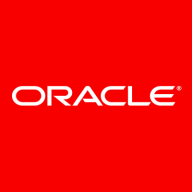

MySQL and Oracle Database Cloud Service are strong competitors in the database management systems category, each catering to different audience needs. While Oracle Database Cloud Service offers robust enterprise features and high availability, MySQL maintains an advantage in terms of cost-effectiveness and ease of use, making it suitable for smaller budgets and straightforward implementations.
Features: MySQL is appreciated for its multi-threaded architecture, integration with various programming languages, and support for SQL standards. It offers crash recovery techniques and ease of use in both small and large-scale applications. Oracle Database Cloud Service excels with features like high availability, scalability, and integration with multi-cloud providers, ideal for enterprises needing robust solutions.
Room for Improvement: MySQL faces challenges with performance when using InnoDB compared to MyISAM, and lacks support for some advanced database features like stored procedures. Replication reliability is another area needing enhancement. Oracle Database Cloud Service could enhance its pricing competitiveness and streamline customer relationships. Configuration complexity and pricing adjustments are common user concerns.
Ease of Deployment and Customer Service: MySQL offers flexible deployment options, relying heavily on community support which is adequate for many users. Oracle Database Cloud Service provides managed cloud services with dedicated support but often faces criticism for its customer service approach, requiring repeated issue explanations and not meeting user responsiveness expectations.
Pricing and ROI: MySQL attracts cost-conscious users with its free open-source version, delivering good ROI with its community edition albeit enterprise support is an additional cost. Oracle Database Cloud Service is viewed as expensive, albeit justified by its enterprise-level features. Its high initial cost is balanced by scalability and robust features available to larger businesses willing to invest.
| Product | Market Share (%) |
|---|---|
| MySQL | 7.3% |
| Oracle Database Cloud Service | 1.0% |
| Other | 91.7% |


| Company Size | Count |
|---|---|
| Small Business | 73 |
| Midsize Enterprise | 31 |
| Large Enterprise | 61 |
| Company Size | Count |
|---|---|
| Small Business | 3 |
| Midsize Enterprise | 2 |
| Large Enterprise | 7 |
MySQL is an open-source database known for its ease of use and high performance. It offers features like replication and clustering, making it ideal for diverse applications. Its cost-effectiveness and LAMP integration are key advantages for businesses.
MySQL supports a variety of languages and platforms, providing reliable, scalable data management. Its graphical interface and LAMP architecture integration enhance its usability, while community support further strengthens its appeal. Challenges include scalability issues with large databases, lack of advanced clustering, and limited high-availability features. Complex queries may affect performance, and integration can pose difficulties. The outdated interface and insufficient documentation are also concerns, along with replication and backup reliability issues.
What are MySQL's key features?MySQL is widely implemented in industries such as web development, e-commerce, and finance. It's used for managing dynamic websites, powering e-commerce platforms, and supporting financial applications. Its compatibility with PHP and cost-effectiveness make it suitable for CMS platforms like WordPress. With cloud services integration, MySQL is a backend choice for scalable applications in various sectors.
Oracle Database Exadata Cloud Service (Exadata Service) delivers the world's best Cloud Database Platform by combining the world's #1 database with Exadata, the most powerful database platform, and adding all the simplicity and cost effectiveness of the public cloud.
We monitor all Relational Databases Tools reviews to prevent fraudulent reviews and keep review quality high. We do not post reviews by company employees or direct competitors. We validate each review for authenticity via cross-reference with LinkedIn, and personal follow-up with the reviewer when necessary.